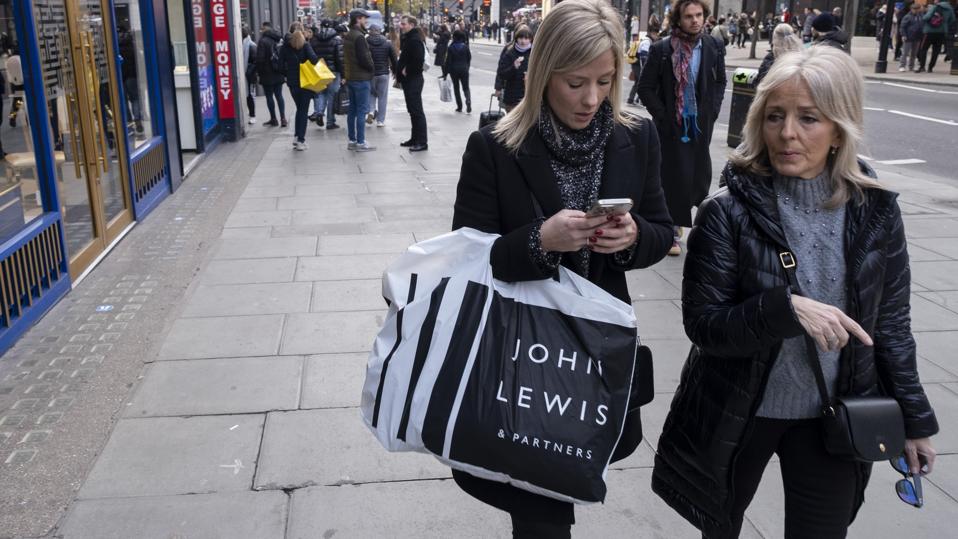Like a couple of million other middle class Brits, my main credit card is my John Lewis Mastercard. It’s a rewards card, with the rewards being John Lewis vouchers (which are currency in all but name where I live). The consumer magaazine “Which?” reports that John Lewis is a “highly rated provider” in its 2023 credit card satisfaction survey, making it joint seventh out of 29 providers along with NatWest and Santander.
Some time ago, I received a letter to tell me that my John Lewis card was changing acount provider. The credit and processing had been provided by someone whose name I could not remember (I went and googled to remind myself that it was HSBC) and they were going to be replaced by a company I had never heard of. If memory serves, I had to go to website or something create a username and password. Anyway, at some point a new John Lewis Mastercard showed up.
(Nothing much happened during the changeover except that I got a message from time to time that a subscription could not be renewed. I actually found this rather useful, since there were several subscriptions that I’d completely forgotten about and was happy to cancel through the simple expedient of ignoring the messages to enter the new card number.)
I used my John Lewis Mastercard today actually. It worked perfectly. Well, I didn’t use the card, I used Apple Pay, but you get the point. The “card” worked perfectly even though the card is at home in a drawer. As a normal consumer, so long as my John Lewis card works and I get my reward vouchers, I do not care who actually provides the account. The only reason that I know that the account is now processed by New Day is because I just went and looked it up.
This makes me wonder just how many U.S. Apple Card users really care whether their account is provided by Goldman Sachs now that Apple is planning to cut short its partnership with them. It appears that Goldman Sachs was losing money on the partnership but could not offload the business without Apple’s approval, which put it in a bind because few other partners would agree to Apple’s terms. Presumably Apple has found someone who will agree to their terms and this is why they are dumping Goldman Sachs.
With over 6.7 million cardholders in the US (and 60% using it as their primary credit card), the Apple Card has undoubtedly reshaped the consumer experience around cards and its card holders might be attractive to any number of players, ranging from Citi and Capital One to Bank of America and American Express, who already manage large card portfolios and have the customer support that will be needed to keep Apple happy.
(While no new issuer has yet been announced, some observers are pointing towards JP Morgan Chase. They are already rolling out support for Apple’s tap-to-pay to its US merchants, starting with beauty store Sephora, so could be looking towards capturing plenty of “on us” transactions.)
Apple could ultimately decide not to have a big-name partner and go it almost alone, of course. All they need to do is choose a bank that is large enough to take on the Apple Card’s portion of Goldman’s $17 billion credit card portfolio as well as related savings accounts, and that could do everything necessary for regulatory reasons but otherwise remain invisible to the customer. As I said in The Economist back in 2019, the Apples and Facebooks and Googles want the banks to do the manufacturing while they take over the distribution.
This is an obvious strategy but it has major implications because if the techfins get between the consumers and their banks, then the banks will end up having to give away not only margin (as Goldman Sachs did) but, much more seriously, data. BofA Securities, amongst others, have pointed out that there is a “huge and valuable prize for private-sector players” from outside the banking sector if they can get in this business because of the “treasure trove” of customer data that is not being fully exploited by the banks. With regulators pushing open banking, and forcing banks to open up this treasure trove to Meta and Amazon and everyone else, we are about to see a real power shift in retail financial services.
There is another way more radical way forward though. As Juan Pablo Vazquez Sampere pointed out in the Harvard Business Review many years ago, there is no technical reason why the banks need to go through card networks at all. Apple could have negotiated with retail banks to tokenise bank accounts instead of credit cards, which merely positioned Apple Pay at the end of the existing distribution value chain for cards. But maybe, with open banking spreading around the world, with a strong start for its buy-now-pay-later products and with access to the NFC interface nailed down (for payments) perhaps Apple are a few chess moves ahead: in the future instead of finding a card issuer, they will just send the money from your bank account to the merchant’s bank account when you tap and pay.
So in the face of this uncertainty, what is the best strategy for a bank? Well, if you don’t have the distribution then you either have to manufacture new products for Big Tech to sell or you have to be better at packaging the products that you do have. This means providing premium APIs to deliver value-adding services above and beyond the open banking minimums (eg, instant payments through FedNow) as well as implementing rich APIs with uptime and response times that are better than competitors. I’m not sure that banks are up for that kind of competition yet.

